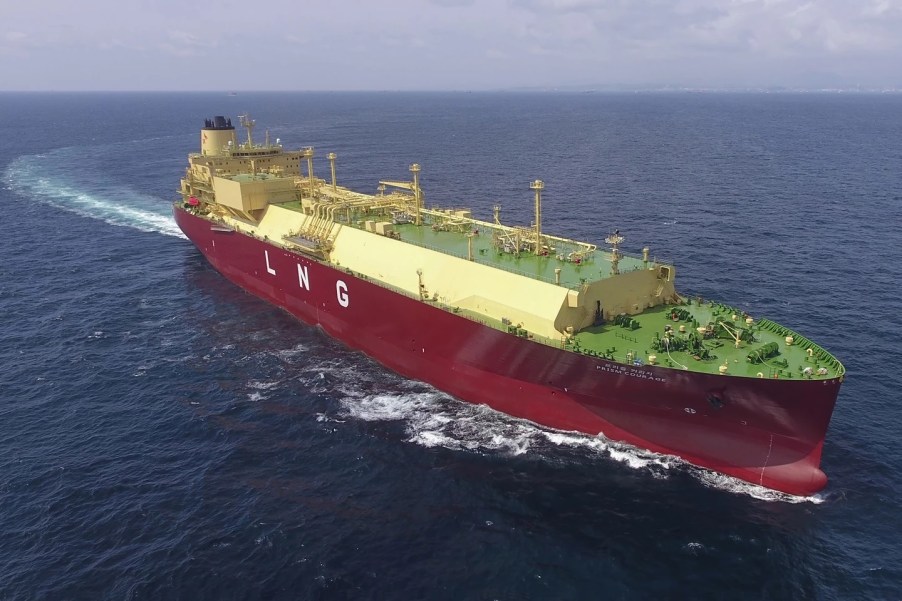
Forget Driverless Cars: Autonomous Hyundai Cargo Ship Just Completed Long Haul To the U.S.
While we tend to focus on autonomous vehicle technology as it applies to cars, there’s another world that uses the tech for other, grander, pursuits. This Hyundai cargo ship is one autonomous pursuit. It just completed a trek using autonomous technology, making it the first autonomous transoceanic trip for a large merchant ship.
The voyage achieved reduced greenhouse gas emissions and fuel. Barring any future issues, this is the wave of the future.
Hyundai subsidiary Avikus built the cargo ship. Prism Courage was the company that commissioned the voyage, operated by SK Shipping. It is classified as an ultra-large liquid natural gas tanker.
Is the Hyundai autonomous ship self-driving?

The tanker used HiNAS 2.0 technology, which is classified as a Level 2 automation system. Level 2 means it carries advanced driver assistance systems. Though not considered self-driving, it does have control of both steering and acceleration/deceleration. The operator is constantly monitoring the ship’s course and can take over at any time.
So there is a certain amount of hands-off operation. The autonomous system can monitor weather, wave heights, and shipping traffic in the vicinity of the cargo ship. So while not exactly self-navigating, a lot of the input required by the crew is being done by the automation system.
The full trip took 33 days starting at the Boryeong LNG Terminal in South Korea. Navigating through the Panama Canal, it docked in the Gulf of Mexico. The American Bureau of Shipping and the Lorean Register of Shipping monitored the ship to make sure there were no surprises.
When would the ship operators take over control?

During the voyage, in heavy-traffic shipping hubs, operators took over the controls. So the entire trip did not incorporate the autonomous system. Estimates are it traveled about 20,000 kilometers under autonomous control. That’s about 12,500 miles for you landlubbers. So this was not some limited approach to autonomous shipping.
HD Hyundai says the cargo ship had seven percent better fuel efficiency while reducing greenhouse gases by five percent. These cargo ships contribute their fair share of atmospheric pollution, though this fact flies under the radar. On the safety front, it avoided about 100 potential collisions. With its success, Avikus is expecting HiNAS 2.0 certification. That will allow it to sell the system to other merchant ships according to Engadget.
What are other advantages to the Hyundai autonomous cargo ship?

Labor shortages are not just a U.S. problem, they are occurring worldwide. With this autonomous syste, fewer professional crews will be needed, with the added bonus of increased safety and mileage.
With fuel prices continuing to rise as a result of the sanctions on Russian exports, saving fuel and efficiency means lower prices for consumers. We can all see the advantages of autonomous systems, but it is a slow, methodical process to certification. This is the first step to increasing shipping while lowering safety incidents and adding crews.



